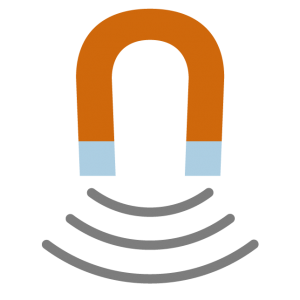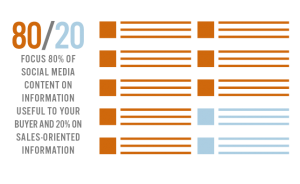Thanks for joining us again as we dig deeper into the world of inbound marketing and what it can do for your business as we take a look at the first of the 4 phases that make up inbound marketing’s methodology.
Flower Blooms, Curb Appeal, and Fast Food Logos Have This In Common
If you said “What are things that attract?” then you are right. Flower blooms are colored specifically to attract insects and birds that feed on the sugars of the flower (and also aid in the pollination process). Curb appeal is essential as part of a visually attractive presentation on a neighborhood or street. Fast food logos are oriented both in structure and in color to invite your appetite, and, as a result, your patronage. Yellows, oranges, and reds are all very popular appetite-inducing colors, so they become very attractive visual elements when you are hungry.
So it is with inbound marketing. The very first phase of its methodology, according to HubSpot, is attract. That’s not just a rule or an idea. It’s an integral part of how inbound marketing begins to work.
In the first post, Inbound Marketing: Is It Something You Need?, we recalled the cold sales calls of old, which often interrupted dinner and family time. Notice that there was nothing attractive about that scenario. Nothing inviting.
To attract is to invite. You want to invite visitors to your content to help them solve problems of all sizes. This concept is important because attracting visitors isn’t the same as converting them. That’s a different stage down the road. At this point, you want to enter into a relationship with them and invite them to learn more about their problem and about how to solve it. That’s the difference between inbound marketing and outbound marketing: with inbound marketing, the visitor is invited to learn more, not have a product immediately shoved in his/her face.
Attract With Content
How do I draw visitors to my site? The answer is simple: awesome content. In the previous post, Inbound Marketing Tools: Reach the Customer, I mentioned the tools of inbound marketing. Those tools are meant for creating content that attracts and engages visitors.
How does a blog, for instance, attract visitors? When you write a blog post, that page is indexed for search engines. SEO, relevancy, regular publication, and other factors determine your visibility in the SERPs (search engine results pages). Frequent posting alone is not enough to increase the visibility of your content. Also, blogs are shareable, and in this age, everyone who is on social media shares either their own or others’ content, including blog posts. If you write repeatedly and in such a way that users find your information useful or helpful or entertaining, they will return for more. It’s likely that, in the end, if you post consistently, you’ll invite attention via the search engines and via social media.
TIP: InsideOut Solutions offers a monthly webinar on blogging to its Clients. Click here to get more information.
Basically, to attract visitors, create content that is honest and engaging. Be real. It’s important during the “attract” phase to gain the trust of your visitors. That means writing what you know about, not what you THINK you know about. Credibility goes a long way toward gaining a solid following of visitors. And the end goal in all of this isn’t necessarily to make those visitors buy whatever you’re selling, rather to provide them a safe place that answers their questions or speaks to their pain points.
Attract Your Ideal Buyer
Focus on Content that Interests the Buyer
Consider what your ideal buyer wants to learn or know more about. If you operate a B&B or an Inn, consider focusing your content on topics such as local events, artisans, regional foods, or seasonal features like foliage or animal migrations. Don’t make every blog post about how awesome and comfy your rooms are. Nothing is less attractive, or boring, than someone talking solely about him/herself.
Writing posts consistently is good, but distributing them via social media is even better. Links from your Facebook, Twitter, and Google+ pages are excellent ways to reach not only your current set of followers/friends, but also to reach beyond. Remember that social media is just that: social. A clever and helpful blog post is more likely to be shared and talked about.
80/20 Rule on Social Media
Not only is social media an excellent place to distribute your blog posts, it’s also a great method for sharing content and engaging in real conversations with your ideal buyer. Sadly, the temptation for many individuals is to abuse social media to only focus on what they offer. It’s an imbalanced approach.
However, the “80/20 rule” is a widely accepted approach to social media marketing. This simply means you spend 80% of the time posting information that is interesting, educational, or informative for your ideal buyer and 20% of the time posting information that is more sales-oriented, exclusively about the offerings of your B&B or Inn.
Draw in visitors with interesting pieces of content from experts about the things they might care about (like local events, artisans, etc.). For instance, you could use Facebook to refer to an article about a local vineyard. Or you could tweet about an upcoming event. Your content doesn’t need to be 100% original. Do your research and locate trusted sources that create compelling and engaging articles, and then share them. Such content is often referred to as “curated,” which means that it is good, valuable, and reliable information from an expert source.
Care More About Your Buyer Than What You’re Offering
Once you care about what your ideal buyer cares about, you will be speaking their language, meeting them where they’re at, so to speak. Two people who can speak a common language engage in a relationship more quickly than two people who don’t.
Inbound marketing’s total methodology is meant to be buyer-focused. Caring about what motivates, interests, and inspires your ideal buyer is a good key to attracting them to what you offer to help solve their problem or reduce their pain point.
Ultimately, the goal of the attract phase of the inbound marketing methodology is simply this: to prove that you care enough to help. Join us for the next post in this series, “Convert with Inbound Marketing”. If you’d like social media alerts of when we publish the next post, join us on Facebook, Twitter, Google +, Pinterest, and Linkedin. Or, if you have an RSS reader, click to subscribe to our blog.
Currently, InsideOut Solutions offers blogging and email marketing services to help you improve your inbound efforts. Click below to contact us and find out more about these services.



